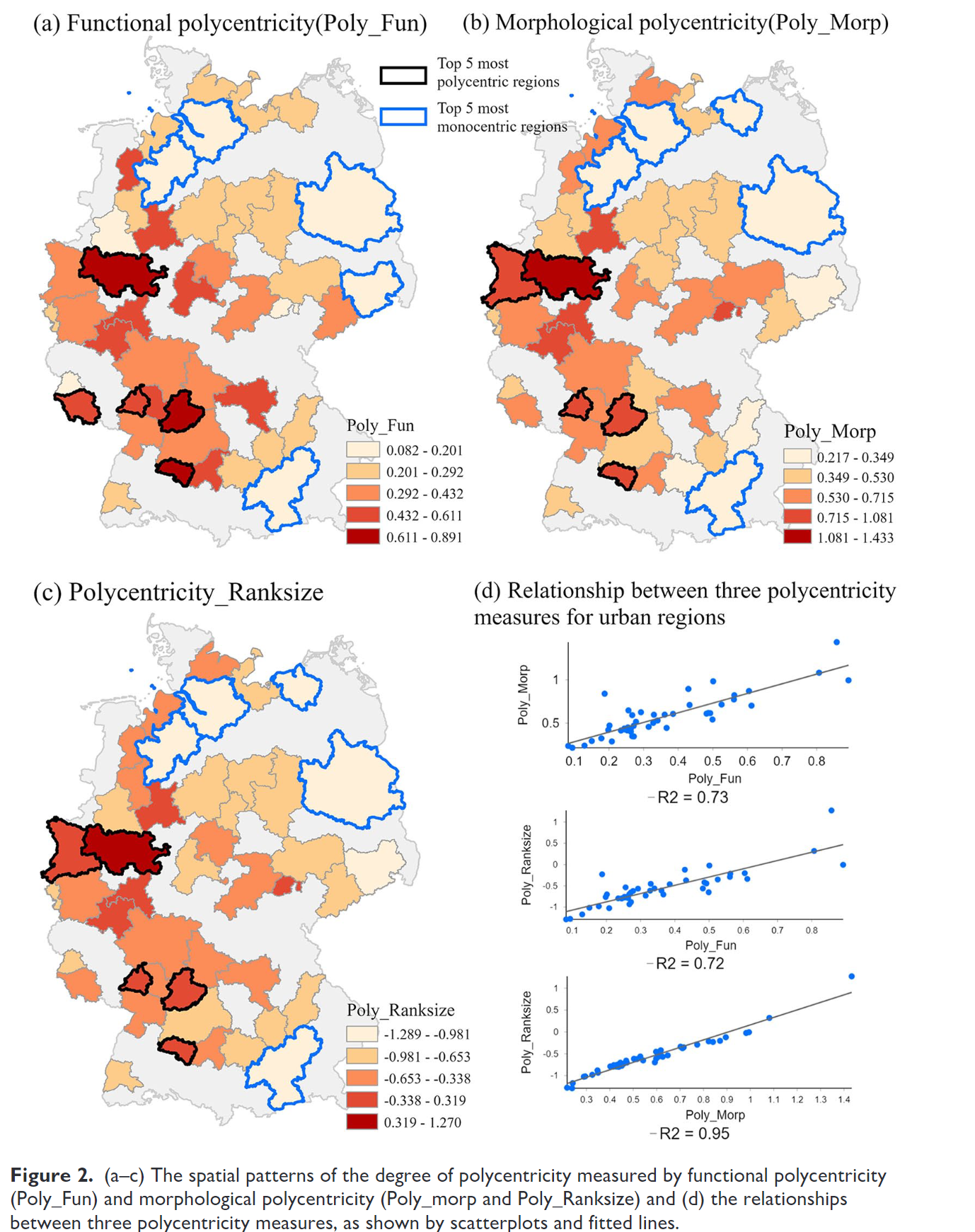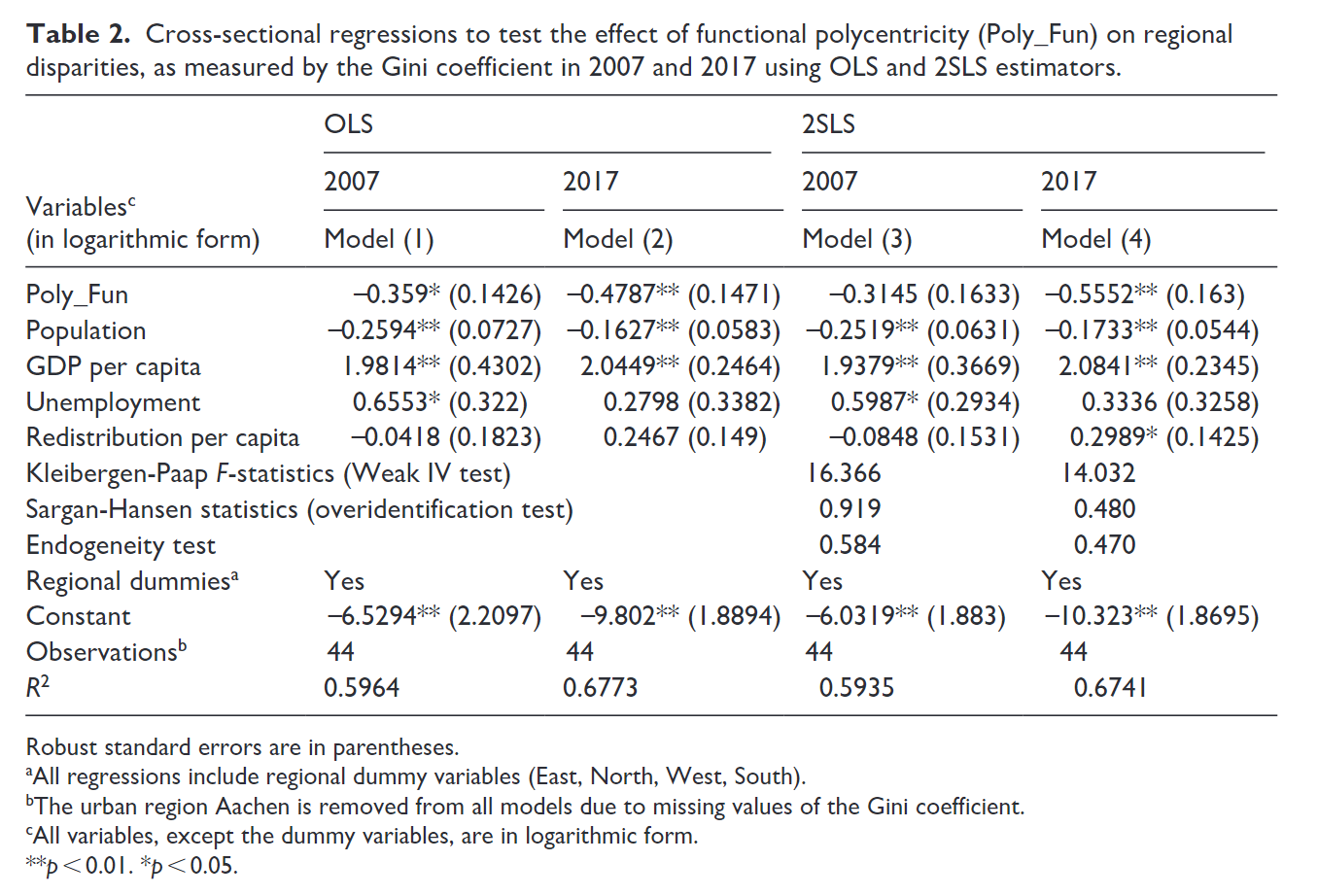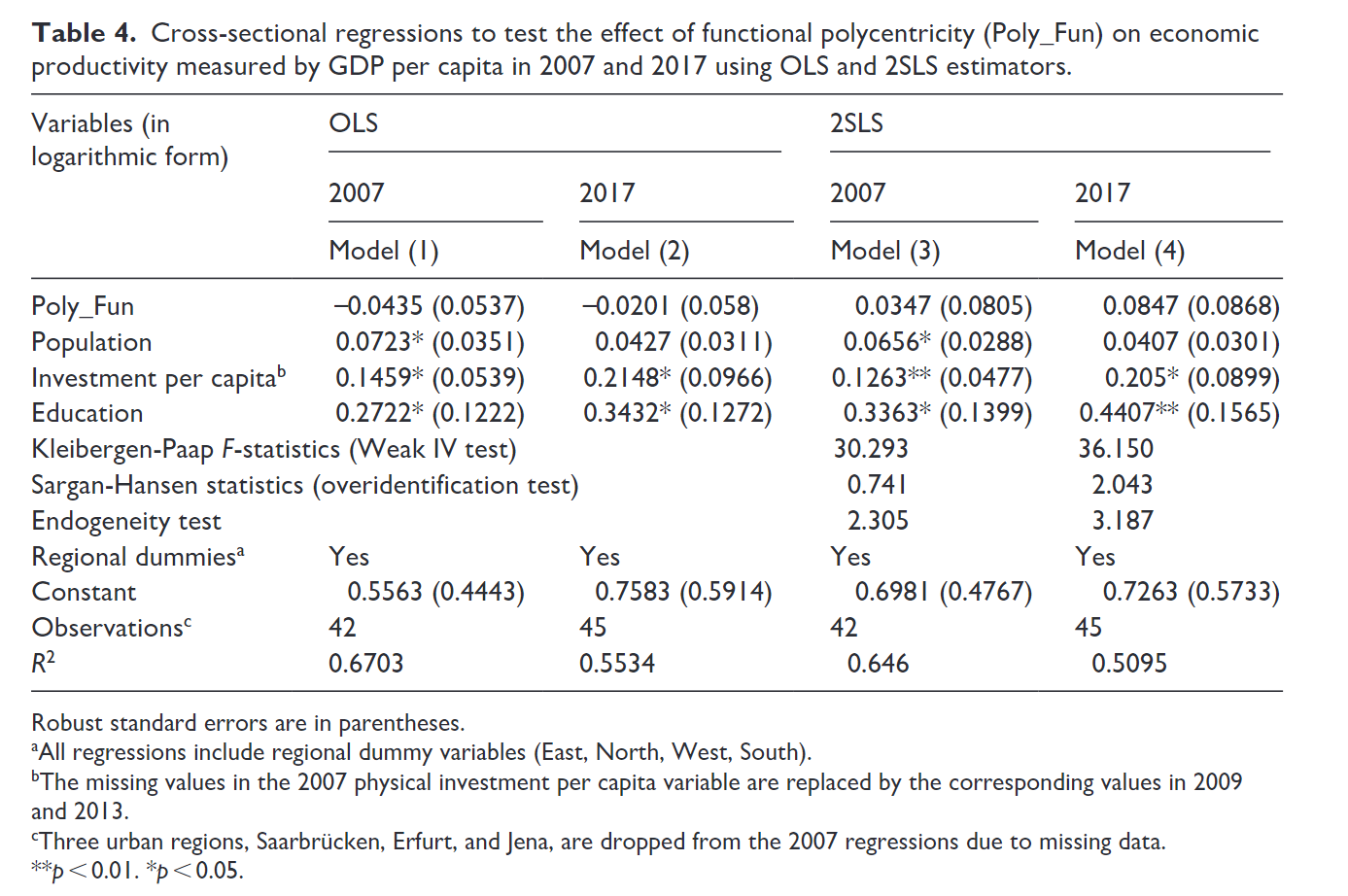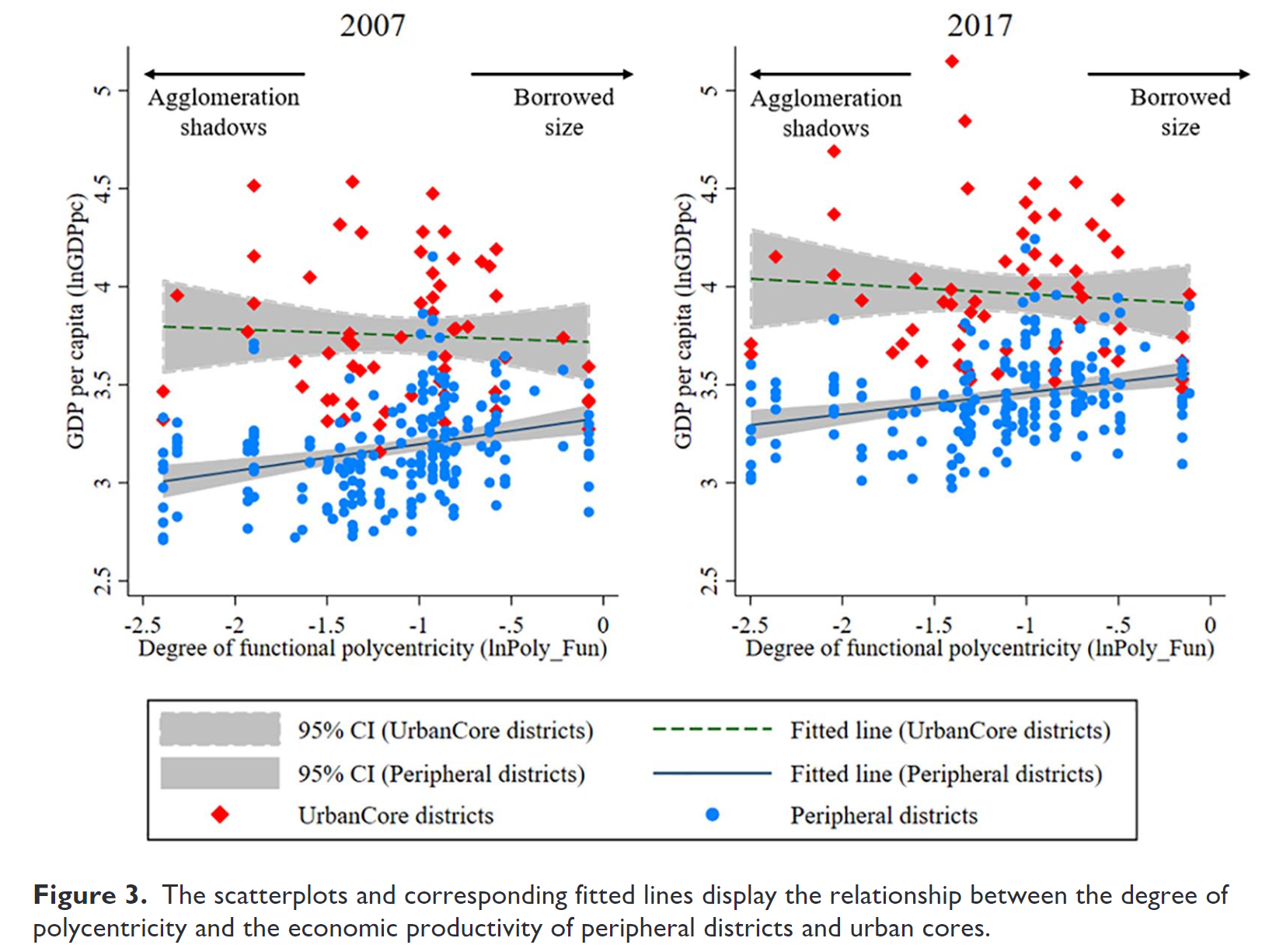Objective:
- Examine whether or not polycentric development can result in greater economic growth and fewer regional inequalities
Case:
- German urban regions; 2007 and 2017
Methodology:
- Indicators
- functional polycentric: $P_f (n) = (1-\sigma_f / \sigma_{max}) * \Delta$
- Morphological polycentricity: rank-size distribution, $ln(rank) = \alpha + \beta ln(size)$
- Outcomes:
- Population-weighted Gini, Coefficient of variation and Gini
- GDP
- Method:
- OLS
- 2SLS: historical degreee of polycentricity measured by municipality population and derivative of elevation
Data Source
Findings:
- A trend of increasing polycentricity from northeast to southwest

- Functional polycentricity can effectively reduce regional inequalities

- A larger population in 2007, higher proportion of educated workers and increased physical investment are positively associated with economic growth
- Functional polycentricity and Morphological polycentricity may not produce greater economic productivity

- Districts situated in more polycentric urban regions exhibit higher economic productivity than those in monocentric regions (borrowed size effect)
- Interaction term: increase in polycentricity in 2017 leads to economic growth in periphery but a loss for urban cores

- Polycentricity leads to win-loss outcomes

Coding Reference:





